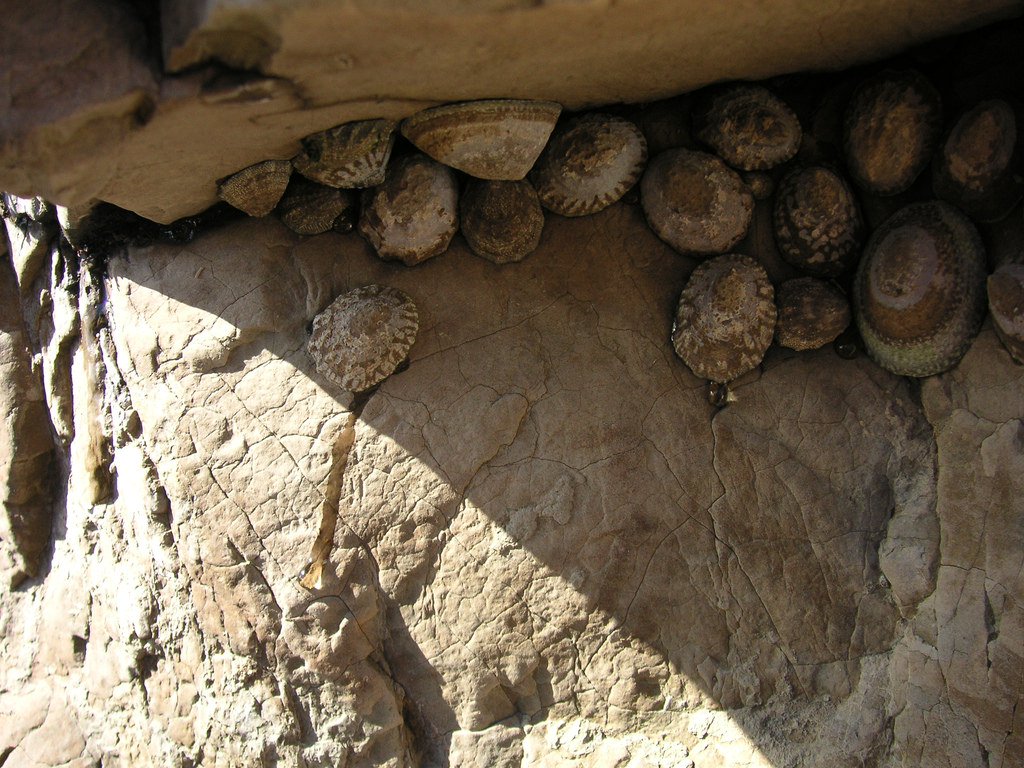The Hardest Biological Material Ever Found: Snail Teeth
Oops. You just bit down too hard on a jawbreaker, and now you need to find a dentist. Wouldn't it be nice if your teeth were stronger? Believe it or not, it's time to start being envious of snails. Scientists have recently discovered that sea snails of one variety, called limpets, have the hardest teeth of any known organism. In fact, their teeth are the strongest known biological substance ever! Do you want to learn more about this exciting scientific discovery and what it might eventually mean for you and your own teeth?
The True Strength of Snails' Teeth

Image via Flickr by blmurch
Limpet teeth have a tensile strength that ranges from 3 to 6.5 gigapascals. A pascal is equal to one newton per square meter, and a gigapascal is equal to 1 billion pascals. If you aren't a mathaholic, this might seem a bit confusing, but it's easier to put pascals and gigapascals into perspective when you think of spider silk.
Before scientists figured out just how mighty limpet teeth are, they thought spider silk was the strongest biological material, and spider silk has a tensile strength of 1.3 gigapascals. That means the strongest limpet teeth are five times as strong as spider silk. According to one estimate, spider silk, pound for pound, has a tensile strength five times that of steel. Steel is stronger than spider silk in other ways, but the fact remains that spider silk is amazing — and limpet teeth are five times as amazing.
Limpet teeth aren't as hard as diamonds are, but diamonds also aren't grown as parts of biological organisms, which makes limpets the king of the who-has-the-strongest-body-part contest.
When you see snails in your garden, you're probably annoyed, but those pesky critters' sea snail cousin, which has a shell length of up to 60 millimeters, is a true wonder of nature. Perhaps it took so long for limpets to gain their well-deserved recognition because their teeth are so tiny. Limpet teeth, which are on the underside of the creature's tonguelike appendage, are less than one millimeter long.
How Limpets Put Their Teeth to Use
If you're thinking about getting an attack limpet for its jaw-droppingly strong teeth, think again. Limpets don't use their teeth to grind their prey into oblivion. They use them to scrape rock when they're feeding on algae. Having such hard teeth is essential, because if their teeth weren't so durable, limpets would quickly grind them into nothing, leaving themselves unable to eat. The curved shape of the teeth, in addition to their strength, makes them perfect for helping limpets feast on their favorite food.
Limpets can live between 10 and 20 years, so it's essential that their teeth hold up for a long time under rigorous conditions. Not surprisingly, sea snails don't get much nutrition from the rock that they scrape up along with the algae. Another fun fact? Limpet waste is somewhat similar to concrete.
Why Their Teeth Are So Strong
So what contributes to the out-of-this-world strength of limpet teeth? The teeth contain a mineral known as goethite, which is a dark iron-containing rock commonly found in formations around the world. In fact, you'll probably see some goethite the next time you drive through Colorado.
Goethite can be any number of colors, from iridescent to reddish brown and many colors in between. Yes, these snails have in their teeth the same stuff that has survived in rock formations for thousands of years. What's more, the goethite in limpet teeth is encased in protein, fortifying them further.
Why Humans Care
Sure, it'll help to know that limpet teeth are the strongest known natural substance the next time you go to trivia night at the local bar, but why else should you care? Scientists are excited about the discovery because of its potential to help them design strong new materials. In fact, there is even a term that describes the practice of putting nature's best attributes to work in human applications: biomimicry.
Biomimicry has already given humankind plenty to be thankful for. Velcro was inspired by the burdock burr, a plant that grows in the Swiss Alps. A kingfisher inspired the design for the noses of bullet trains in Japan; the new design greatly reduces the noise that these trains make when they emerge from tunnels. The inner workings of beehives served as the idea behind a power distribution method. The aerodynamics of a fish inspired a car design. These are just a few of the ideas that nature has already given to humans.
There are innumerable potential applications for the principles behind limpet teeth. Research into limpet teeth could lead to stronger buildings and safer cars, but that isn't all. It could even lead to a substitute for Kevlar. Naturally, all the ideas for limpet teeth are in their nascent stages, so we will have to be patient to discover how these slimy creatures of the sea will help make a better world for bipedal folks.
Smile for Limpet Teeth
Most people need to go to the dentist for a filling once in a while, and dental fillings come in all varieties. If you're feeling fancy, you could get a filling made of gold. More common filling materials include silver amalgam, porcelain, plastic, and glass ionomer. Each type of filling has its purpose and place, but soon a filling type modeled after limpet teeth might make its way onto the list of options.
While you probably won't go snacking on rocks if you get a filling inspired by limpet teeth, it'll still be cool to know that your filling is practically invincible. Of course, your dentist will be the one to recommend the best type of filling for your situation —and it's possible that limpet-inspired materials could also be used to create entire false teeth.
Sure, limpet-inspired tooth fillings aren't currently an option, but buying a dental discount plan and being prepared for unexpected dental emergencies — such as those jawbreaker incidents — is never a bad thing. And you can look forward to the time when limpet teeth go from being a cool biological marvel to a part of our everyday life.





